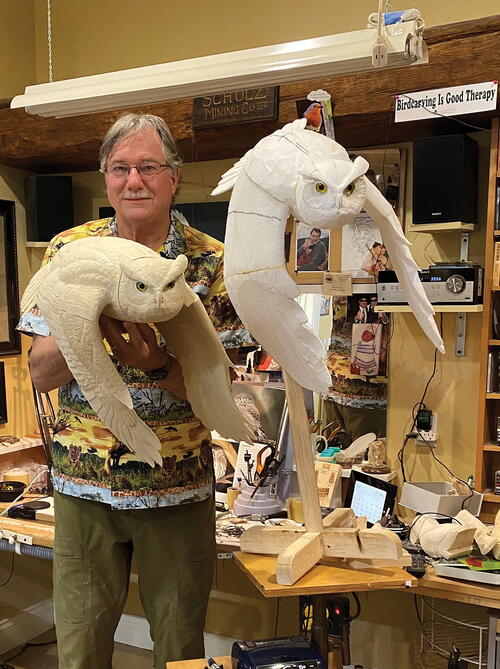The Great Horned Challenge, Part One
In pursuit of a magnificent owl in full flight.

The art of bird carving is not “wooden taxidermy.” The natural world is alive with beauty, and the kingdom of birds contributes mightily to this.
Bird carving is sculpture in its highest and purest sense, where the subject matter is drawn from more than 9,500 members of this unique, varied, and beautiful family of feathered invertebrates. Within this diverse family is a dazzling array of sizes, shapes, feather colors, patterns, and plumage variations. From the cryptic patterning throughout the body of a great horned owl to the brilliant colors of a male eastern bluebird, the visual spectrum among birds is vast.
Bird carving artists are faced with the daunting challenge of replicating the elusive beauty of birds by skillfully shaping the hard surface of a block of wood, texturing, and correctly applying color to replicate the essence of the living creature as faithfully as possible. The high degree to which this has evolved in the hands of the modern masters of decorative bird carving is mind-boggling.



